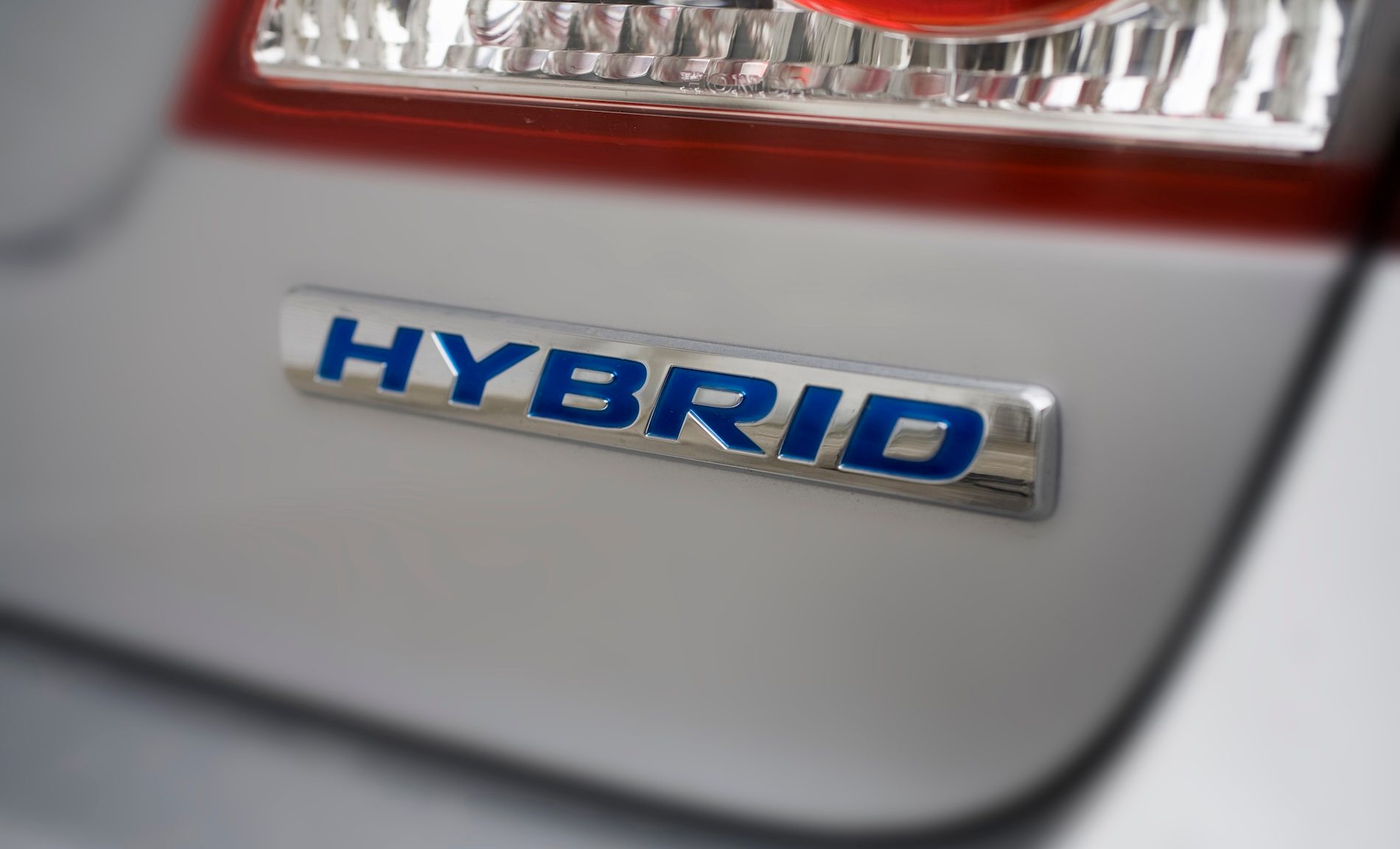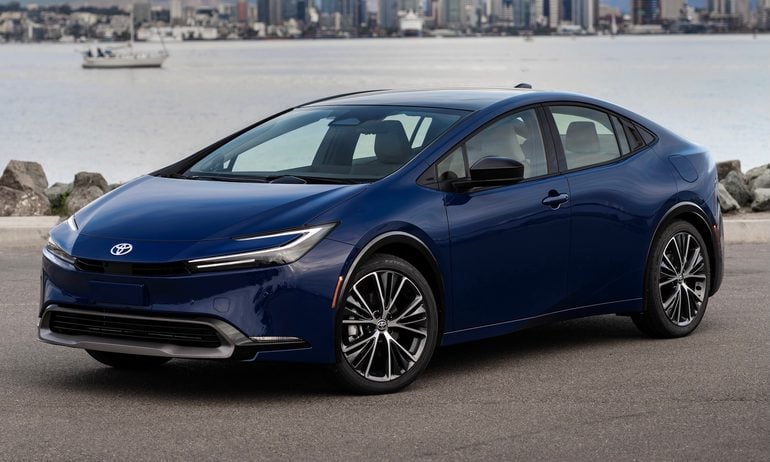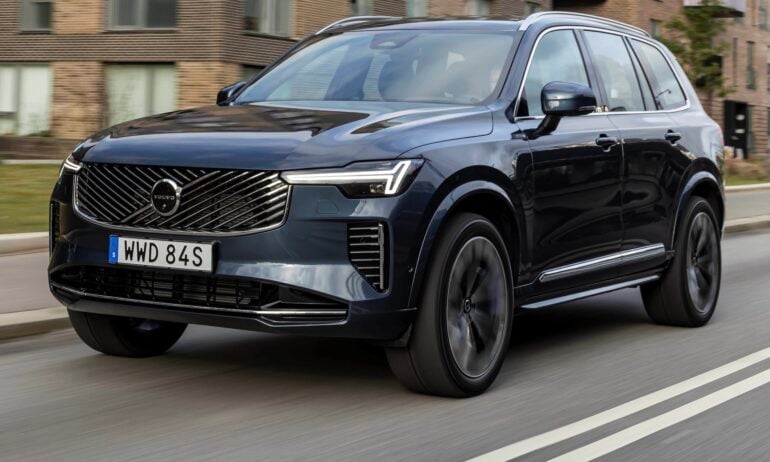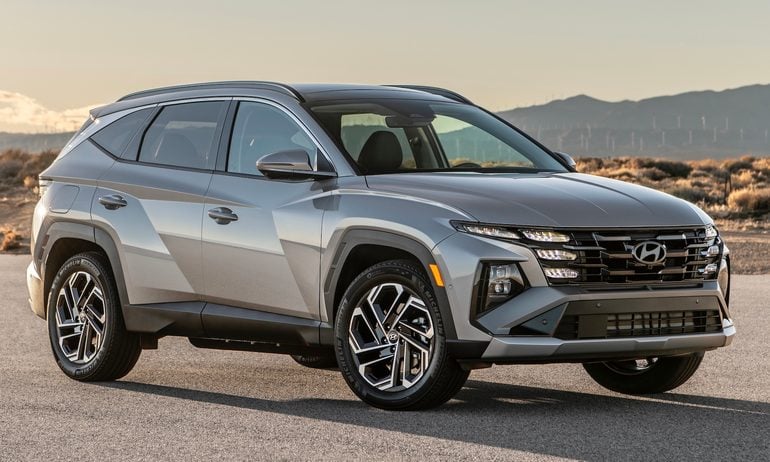Hybrid Cars: Your Complete Buying Guide
Our hybrid buying guide covers everything from types of hybrid vehicles to choosing the right hybrid for you.

Many, or all, of the products featured on this page are from our advertising partners who compensate us when you take certain actions on our website or click to take an action on their website. However, this does not influence our evaluations. Our opinions are our own. Here is a list of our partners and here's how we make money.
If you’re new to buying a hybrid vehicle, you may find the term “hybrid” to be somewhat confusing. At a high level, hybrid refers to vehicles that use some combination of gasoline and electricity for power. However, from there, vehicles called hybrids use very different technologies to put and keep a car in motion.
An increasing number of car owners are buying hybrids as a way to reduce gas costs and fuel emissions, without having to make the leap to a fully electric vehicle. In response, auto manufacturers are growing their hybrid lineups and providing more models to choose from.
How do hybrid cars work?
Hybrid electric vehicles (HEVs) use a combination of gasoline and electricity, but more specifically they use an internal combustion engine (what traditional gas-only vehicles use) and one or more electric motors to generate power. Hybrids are designed to switch seamlessly between a gas engine, the electric motor or a combination of both. This dual-powered approach can improve fuel efficiency and reduce tailpipe emissions when compared to an internal combustion engine (ICE) car that uses only gasoline or diesel.
When a hybrid car accelerates, decelerates or idles, the support of the electric motor helps to improve the gas engine’s efficiency. For example, the electric motor may give the engine a boost when the vehicle climbs a hill or speeds up to pass. Also, many hybrids are equipped with an auto start/stop function, which shuts the engine down when the vehicle is stopped at a light or in heavy traffic and restarts the engine when the car starts moving again.
So what’s the difference between a hybrid vehicle and an EV? Although hybrid cars use both a gas engine and an electric motor, fully electric vehicles (EVs or BEVs) use no gasoline and rely solely on a battery-powered electric motor. Think of hybrids as a bridge between ICE vehicles that use only gasoline and full EVs that use no gas and require an external power source for charging.
Did you know...
The fuel economy of hybrid and electric vehicles is expressed as MPGe or miles per gallon equivalent. The Environmental Protection Agency developed the MPGe rating to compare hybrid and EV energy consumption to a gas-powered vehicle's fuel consumption. According to the formula, using 33.7 kWh of power is equivalent to using one gallon of gas. What are the different types of hybrids?
You will find three main hybrid categories — full hybrids, mild hybrids and plug-in hybrids — with each working differently. In some cases, a car model may offer more than one hybrid option. Some hybrid articles don’t cover plug-in hybrids, but for those just learning about hybrids, we’re including all popular vehicle categories with hybrid in the name. Here’s an overview.
Full hybrid electric vehicles (FHEVs)

Also referred to as conventional or traditional hybrids, these vehicles can operate just on the electric motor, the gasoline engine or a combination of both. They automatically switch between power sources to optimize efficiency. The battery charges with power from the gas engine and regenerative braking, a technology that captures kinetic energy from braking and uses it to recharge the battery. They can’t be plugged in for charging.
- Pros: Doesn’t have to be plugged in to charge the battery, so no need for access to a charging source.
- Cons: Has a limited electric-only range, so not ideal for long trips on electric power alone.
- Best for: Drivers without reliable access to home or public charging.
- Price: Some models start in the high $20,000s to low $30,000s.
- Fuel efficiency: Average 59 MPGe for cars and 53 MPGe for SUVs (city/highway combined).
- Some hybrid models: Toyota RAV4, Highlander, Prius and Camry. Honda CR-V and Accord. Ford Escape and Fusion.
Mild hybrid electric vehicles (MHEVs)

MHEVs, also called micro hybrids, have a smaller electric motor and battery than a full hybrid. This setup does not propel the car, but it does assist the gas engine with starting, accelerating and powering ancillary systems like the air conditioner. Like full hybrids, mild hybrids don’t require external charging. Instead, the battery recharges through regenerative braking and the engine. When compared to an all-gas vehicle, MHEVs deliver slightly better fuel economy and lower emissions. Usually, MHEVs are marketed simply as “hybrids,” but if the electric motor can’t power the wheels on its own, the car is a mild hybrid.
- Pros: Usually cheaper than other types of hybrids.
- Cons: Can’t run on electricity alone, so fuel savings and environmental benefits are limited.
- Best for: Drivers who want a self-charging hybrid with a lower price tag, even if the fuel savings and environmental benefits are more modest.
- Price: A few models start in the high $20,000s.
- Fuel efficiency: MHEVs can be up to 20% more fuel efficient when compared to the same non-hybrid models.
- Mild hybrid models: Volvo, Audi, BMW, Mercedes-Benz and Land Rover, among others — offer vehicles with mild hybrid systems.
Plug-in hybrid electric vehicles (PHEVs)

Plug-in hybrids operate like full hybrids — using a gasoline engine, electric motor and rechargeable battery that can be charged with regenerative braking. The big difference is that PHEVs have a much larger battery that can be plugged into an external source, like a wall outlet or charging station. For that reason, PHEVs can travel farther, some up to about 40 miles, before the gas engine takes over. A PHEV can travel several hundred miles on a tank of gas. Some PHEV models have an EPA-estimated range of more than 500 miles with a full tank of gas and battery charge combined.
- Pros: Have a more extended range on electricity alone than other hybrid types, saving on fuel costs. Can switch to gasoline for long trips, eliminating range anxiety.
- Cons: Requires access to charging infrastructure to optimize electricity use. Usually cost more than HEVs or ICE vehicles.
- Best for: Drivers who mainly commute short distances on a daily basis (40 miles or less) but need a gasoline option for longer trips. Also drivers who have access to public or at-home charging on a regular basis.
- Price: Some models start in the low $30,000s.
- Fuel efficiency: Average 89 MPGe for cars and 75 MPGe for SUVs (city/highway combined).
- Some plug-in hybrid models: Toyota Prime Prius, Mazda CX-90, Hyundai Tucson, Chrysler Pacifica, Jeep Wrangler 4xe, Ford Escape and Mitsubishi Outlander.
Do hybrid cars have to be charged?
Yes. All types of hybrid vehicles recharge the battery through regenerative braking and the gas engine. They essentially charge themselves, so you don’t have to do anything — other than drive — to replenish the battery.
However, PHEVs provide an additional way to charge the battery, which greatly extends the distance they can go using only electricity. In general, PHEVs with the longest electric-only range can go about 30 to 40 miles, compared to only a few miles for an HEV. (MHEVs can’t run on electricity alone.)
PHEVs can plug into a standard household electrical outlet, a Level 2 home charger or public charging stations.
- Using a standard outlet is considered Level 1 charging, which will take longer and is convenient for overnight charging.
- A faster way of charging is installing a Level 2 charger at home, which can cost several thousand dollars.
- PHEVs can also use public chargers at workplaces, businesses or charging networks like Electrify America, ChargePoint or EVgo. However, many public chargers are Level 3, also called DC fast chargers, and most PHEVs aren’t compatible with these rapid chargers.
The benefits of owning a hybrid vehicle
The advantages and disadvantages of hybrids depend on whether you’re comparing them to an ICE vehicle or BEV.
Hybrids vs. ICE vehicles
Pros
- Better fuel efficiency. Because hybrids rely on their electric motor to assist the gas engine, or in some cases to run the car on electricity with no gas, fuel expenses for hybrids are less than for ICE vehicles.
- Less pollution. When in all-electric mode, hybrids don’t produce greenhouse gases. So, overall, their tailpipe emissions are lower than for an ICE vehicle.
- Lower operating costs. Hybrids can be less expensive in ways beyond lower fuel costs. For example, regenerative braking reduces the wear and tear on brakes, so brakes may not need to be replaced as often.
- Potential incentives. Some plug-in hybrids qualify for federal tax incentives when purchased or leased. Such incentives aren’t available for traditional ICE vehicles.
Cons
- Higher upfront cost. Because their dual powertrain system is more complex, hybrids usually cost several thousand dollars more than their ICE counterparts.
- Costly repairs. The complexity of hybrid powertrains, when compared to ICE vehicles, can result in higher repair costs. The cost of replacing a hybrid battery can be up to $8,000, but they last an average of 10 years or more, and auto manufacturer hybrid battery warranties are often at least eight years or 100,000 miles.
- Less space. Having both a battery and electric motor on board can reduce passenger and cargo space in some models.
- Driving experience. You might be able to feel hybrid powertrains switch between electric and gas, although this is becoming less of a problem with newer models.
Hybrids vs. BEVs
Pros
- Longer range. Because they receive power from a gas engine in addition to an electric motor, hybrids have a longer range than BEVs. If the battery is depleted, a hybrid uses the gas engine to keep going.
- Lower upfront cost. Hybrids usually cost less than all-electric vehicles.
- Faster refueling. If time is a factor, hybrids can refuel faster at a gas station than waiting for a BEV to charge.
Cons
- Higher fuel costs. Actual costs vary depending on the price of gas and electricity where you live. However, the U.S. Department of Energy says hybrid drivers can save up to $1,500 a year in fuel costs, compared to BEV drivers at $2,200. That’s a difference of up to $700 annually, which can add up over time.
- More maintenance. With a hybrid, you will still invest time and money in engine-related upkeep, such as oil and fluid changes. This type of maintenance isn’t required for BEVs.
- Higher emissions. Because hybrids do burn gasoline, they have tailpipe emissions. BEVs have none.
🤓 Nerdy Tip
The Department of Energy provides a Drive-Electric Fuel Savings Calculator, where you can compare the cost of driving a BEV or PHEV to a conventional gas vehicle based on your state or zip code. Buying and financing a hybrid vehicle
Even though hybrids usually cost more than ICE vehicles, you may be able to recoup those costs in fuel savings over time. There are also five steps you can take to lower your upfront and ongoing expenses of hybrid ownership.
- If you’ll be financing the car, shop for the best auto loan interest rate you can qualify for. Some lenders offer electric car loans or green loans that have rate discounts, and most include hybrid vehicles. Also, get a preapproved auto loan, and if you're buying from a car dealer see if they can beat your preapproved rate.
- Look into auto deals and incentives from car manufacturers.
- Check into any possible local and state incentives, as well as rebates from your electric company.
- Don’t overspend. Online buying sites such as Kelley Blue Book and Edmunds can tell you a fair price for the vehicle. Also, an auto loan calculator can help determine how much you can spend, at what interest rate and for what loan term, to reach a monthly payment within your budget.
How to choose the right hybrid for you
When deciding what type of hybrid to buy, here are some things to think about:
- Driving habits. The greatest benefit of hybrids comes with city and low-speed driving, when the electric motor and regenerative braking can engage more to reduce fuel consumption. So if you mainly drive short commutes daily, and don’t need a long electric range, an FHEV may be your best option. If you regularly take long highway trips and need more range, consider a PHEV.
- Budget and available incentives. Hybrids start in the $20,000s to $30,000s and go well over $100,000 for luxury models. MHEVs and FHEVs start at the lower end but don’t qualify for federal incentives. PHEVs cost more but may qualify for federal incentives.
- Need for charging access. Even with a shorter electric-only range, FHEVs are the better option for drivers who don’t have time for charging or regular access to home or public chargers.
Once your choices are down to a few hybrid models, arrange test drives which are especially important if you’ve never driven a hybrid. Hybrids can feel very different when compared to gas-only vehicles, and the driving experience can vary greatly among hybrid models.
If you decide a hybrid vehicle is right for you, the good news is that your options are growing. As many car manufacturers increase their focus on hybrid vehicles, it’s likely that you can find a hybrid car, truck or van to fit your lifestyle, while cutting your fuel costs and reducing your carbon footprint.
What’s that acronym?
- BEV: battery electric vehicle. BEVs are all electric, with a rechargeable battery and no secondary source of power. They’re usually just called EVs.
- HEV: hybrid electric vehicle. HEVs have a conventional gas engine and one or more electric motors. They do not plug in for charging.
- ICE: internal combustion engine. Vehicles with traditional gas engines are ICE vehicles.
- FHEV: full hybrid electric vehicle.
- MHEV: mild hybrid electric vehicle. MHEVs have a small electric motor to assist a gas engine. They can’t plug in for charging and aren’t capable of all-electric driving.
- PHEV: plug-in hybrid electric vehicle. PHEVs have a gas engine and battery, and they can plug into an electric power source for charging.
Article sources
NerdWallet writers are subject matter authorities who use primary,
trustworthy sources to inform their work, including peer-reviewed
studies, government websites, academic research and interviews with
industry experts. All content is fact-checked for accuracy, timeliness
and relevance. You can learn more about NerdWallet's high
standards for journalism by reading our
editorial guidelines.
More like this
Related articles






